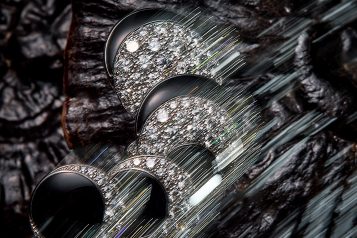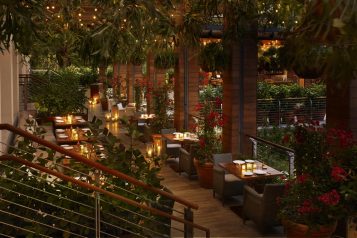New Beginnings
The highly anticipated, expanded MAM and its picturesque backdrop are enough to herd the crowds, but Collins is looking past the physical plant to the programs and strategies that will sustain and bring the museum on par with the major art institutions worldwide.
“I think of a museum as a library and a laboratory,” he says. “It’s a repository for ever-growing collections of materials that represent different moments in time, yet a site to constantly experiment with new artists and exhibitions and offer new experiences.”
The 120,000 square feet of interior room, which is more than three times the size of the museum’s current facility, provides a luxury of space for temporary and permanent exhibitions, collections of both emerging and established artists, as well as newly commissioned works of art. Collins will also continue to spotlight the great local artists. “By accommodating and expanding MAM’s collections, we are able to tell different stories of modern and contemporary art through a more balanced and broader array of curatorial programs, and thus reach a greater audience,” Collins says.
In the city where private collectors and museums have shaped the cultural dialogues, Collins wants to position MAM as a clearing house on information about the other institutions and local arts scenes. “We don’t need to reinvent the wheel here or duplicate our peers’ institutions,” he says. “By working together and providing clarity for each program, we will only make all our programs better and community richer.”
Another piece of the museum’s institutional growth is its educational programs for school children and adults. Advantageously, the new building houses an educational complex with a library, auditorium for the time-based arts, classrooms, and workshop space. “What one discovers about all of our curious audience, and younger people in particular, is that there is a demand for opportunities to have more than a passive experience with the visual arts,” he explains. “You need specific space for that hands-on, interactive engagement.”
With the epic MAM redefining public space, Collins hopes it brings the community together in both formal and casual settings. “Our diverse audience and international visitors will be able to engage one another in new kinds of conversations catalyzed by their art experiences and unfolding in more casual ways,” he says. The Pritzker-winning architects created a quasi-outdoor space intentionally for one of the city’s most attractive draws—the weather. “There are very few places (in Miami) where people can gather outdoors comfortably.” The museum sits on an elevated platform facing the bay, which brings the cool ocean breeze into 80,000 square feet of outdoor programmable space, all under a massive canopy.
The new art museum, which will open to the public in 2013, crawled through nearly a decade of planning and promises, and left many skeptical this project would ever break grounds. But work crews have finally begun the remediation process that will prepare eight acres of land for vertical construction. MAM shares the landscaped park with Miami Science Museum’s new 250,000-square-foot facility that will open its doors in 2014. The nearby Adrienne Arsht Center for the Performing Arts completes the cultural trifecta.
The burgeoning Magic City cannot be a greater contrast to Collins’ hometown, Philadelphia, where childhood weekend trips to the historic art museums cultivated his studies and careers in the visual arts. But MAM’s new director is embracing the dynamics of Miami as well as the art, design, and people that perpetuate the proud, vivacious culture. “I love it here. It’s a friendly and inviting place to be—and never dull.”



















